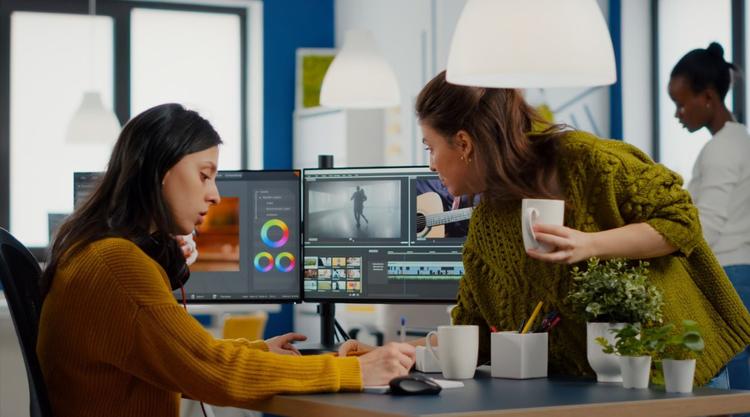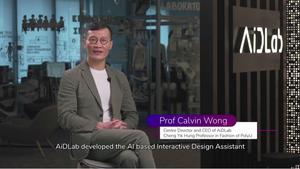Generative AI In Design: Exploring The Boundless Possibilities
Sector: AI + Data, UI/UX
Author: Nisarg Mehta
Date Published: 03/29/2024

Contents
Generative AI is revolutionizing every aspect of design, from the seemingly insignificant everyday objects to the lay-out of entire cities. Unlike other types of design work that only display patterns or have an appearance, prior knowledge about the structure and form of the object and present them in an efficient and useful manner.
With generative AI, designers can inform the AI about how the object should look like, the resources they have, and how it will function. There are projects like this already running, and others are still coming in the future.

“Generative AI market is projected to reach $76.8 billion by 2030” – MarketsandMarkets.
Another research from OpenAI called “Generative Models” provided evidence of the technology’s impact across many domains. As specified in the study, several generative state-of-the-art models succeeded in various image, text, and music generation tasks.

Currently, we are experiencing tools like Midjourney, Dall-E, and even Sora changing the way we design. But how significant is it? and what can we expect from Generative AI in the future?
Let’s find out. But first, let’s clear the basics.
What is Generative AI?
Generative AI: What is it? Generative AI is a technology that can automatically make new content, such as pictures, music, or designs. It learns from samples of existing data and makes new things based on this knowledge.
For example, with artificial intelligence apps like DeepArt, people can upload photos of themselves and see them reimagined in the style of famous artists such as Van Gogh or Picasso.
Generative AI’s Mechanism
This AI functions by analyzing a lot of information, recognizing patterns or styles, and employing them to generate original content. You can compare it to teaching a computer how to recognize art types and then request it to draw its own variant. In design, it means it can support you in creating new designs for how something should appear or function.
In other words, it uses what it has learned from other designs to help us generate more of them. This subsection has described generative AI and how to use it to create more unique content via examination of current examples. Afterwards, how this technology is modifying and innovating design in several fields.
Innovations in Design through Generative AI
Gen AI has brought numerous new use cases of AI to action. Here are some of the top ones:
1. In Physical Object Design
Generative AI has transformed the way we think about designing and producing physical objects. By grasping the essential properties of different materials and the details of the manufacturing process, AI can become an expert optimizer of material usage and speed of production.
One example involves Siemens’ plan for a future in which any technician can ask an AI about the consequences of changing the production process, and the system instantly outputs recommendations that would take the organization’s COE hours to calculate.
However, from a quality perspective, generative AI generates the most substantial improvements. The system’s potential for accuracy and customization enables levels of granularity inaccessible to designers and process engineers in the past.
2. In Graphic design
Generative AI immediately became the must-have tool for graphic designers. A notable recent example is how Nutella utilized AI to develop over seven million unique label designs for their products.

Source: Entrepreneur
Nutella Unica had genuinely novel packaging – over seven million jars, each with its individual labels . The sheer volume of unique designs possible indicates how AI’s generative capabilities could democratize branding. Thousands of businesses, not just the mega-food corporations, might decode each jar, pack, and piece.
3. In architecture and urban planning
Generative AI is forcing waves of change in the field of Architecture and Urban Planning. It makes the process far more sustainable and efficient. The system improves translating ideas in highly contextualized and functional buildings and cities by bridging the gap between chemistry and the natural world.
Architects enter different preferences, such as intimacy levels in a room or facade styles, and the AI generates examples of designs that fulfill these criteria. Once again, the tool does not only make the beginning of the project quicker; it also allows designers to experiment with ideas they could never do before due to the immense number of possibilities.
4. In Fashion Design
Generative AI can make a difference within the fashion industry by optimizing the design process.
For example, Aida, an AI fashion design assistant, was created by Calvin Wong, a computer scientist from Hong Kong.

Source: YouTube
The program can elaborate on a detailed clothing design in approximately ten seconds – a job that mighters months for a human designer to fulfill . It exemplifies the efficiency of generative AI as it allows designers to move from an idea to a prototype quickly.
5. In UX Design
Generative AI defines the way user interfaces and experience get designed and improved. With the vast amount of data on users’ interaction and a comprehensive picture of what design generates the most favorable response, AI can develop UI/UX design and content that is visually and experimentally creative . Therefore, products and services may provide more appealing interface design that is beneficially personalized to a particular user. Also, the swift creation of UI/UX prototypes allows teams to make a more informed choice to find the most suitable solution faster.
All the specified above innovation in different design fields evidences the potential and gravity of generative AI. This technology transforms the approach to creation through quick prototyping, similarly quick doubts and creations, and finalizing with experiments that allow to choose the optimal solution. Hence, on the one hand, AI changes the method of generating design projects, and on the other, it changes creativity itself.
Risks and Limitations of Gen AI in Design
The use of generative AI in design also raises serious issues related to intellectual property and copyright. Specifically, who “owns” the design created by the AI – the user who set the parameters, the data owners, the AI creators, or the AI itself?
Currently, the discussion in these issues is still ongoing, and no clear legal framework has been established . Furthermore, AI-generated designs may accidentally replicate existing designs, leading to issues related to non-originality and copyright infringement.
Should You Replace Human Designers with AI?
Finding the right balance between the qualities that AI and human designers bring to design is also a significant challenge.
While AI can generate hundreds of designs within seconds, its design may lack the creative and emotional aspects that are often associated with human-designed products. That is why the best way would be to use AI as a tool to augment rather than replace the artistic abilities of human designers.
Limitations of Gen AI in Design
Technical limitations remain a major obstacle that must be overcome for generative AI to achieve its full potential. Generating highly complex or high-resolution designs can be incredibly computationally intensive and may require levels of computing power that current technology cannot provide.
Additionally, the AI may not yet fully understand human aesthetics and cultural significance, which contributes to the design creation process, meaning that Some additional advances in hardware and algorithms and more sophisticated training data sets are still necessary to push the envelope of what generative AI can do.
Learning from these challenges, it is important for us to be cautious about how we integrate generative AI into the design process. On one hand, it is important to fully harness the potential benefits of AI speed and innovation; on the other hand, we must always ensure that human judgment, creativity, as well as ethical considerations are always taken into account.
The future of design with generative AI How can it further foster creativity?
With the ultimate potential of design with generative AI, it is clear that the opportunities for human creativity will be increased and efficiency enhanced.
Generative AI is not all about doing tasks in the place of humans but, rather, it is about allowing the human mind to explore new things.
For example, when hundreds of AI-generated options are fed to human designers using this technology, they could combine them to develop new design languages. Therefore, the future is bright, haven, and human-driven.
What developments and challenges would this involve?
The challenges include the need to develop more trustworthy AI models that will not make errors and legal frameworks to clearly guide the intellectual property aspect. Furthermore, a collaborative design industry is a necessity. The design industry must work together to ensure that AI does not take away the creativity and design tasks that are meant to grow areas not yet witnessed.
Gen AI will Enable the Next-Gen of Designing
The emergence of generative AI technology promises a design revolution, providing a new era for innovation and efficiency. The capabilities of AI offer a dual opportunity – both creative and streamlined, allowing designers to experiment with structures and concepts when creating new forms.
However, relying on AI in the design process has a range of limitations that should not be ignored, including ethics and hours of use, the means of balancing between machine and human authors, and the final legal and intellectual copyrights.
The future of design with AI should be based on the expectation of a developed interactive cooperation between the designer and the AI above the limitations that will make the design more versatile, personal, and sophisticated.
Experience design is one of the best approaches to pull users towards your business and sustain their loyalty. Our Experience Design eBook lets you avoid mistakes and utilize Experience Design in the most efficient way possible. Download Your eBook Now!
Latest Tech Insights!
Join our newsletter for the latest updates, tips, and trends.



